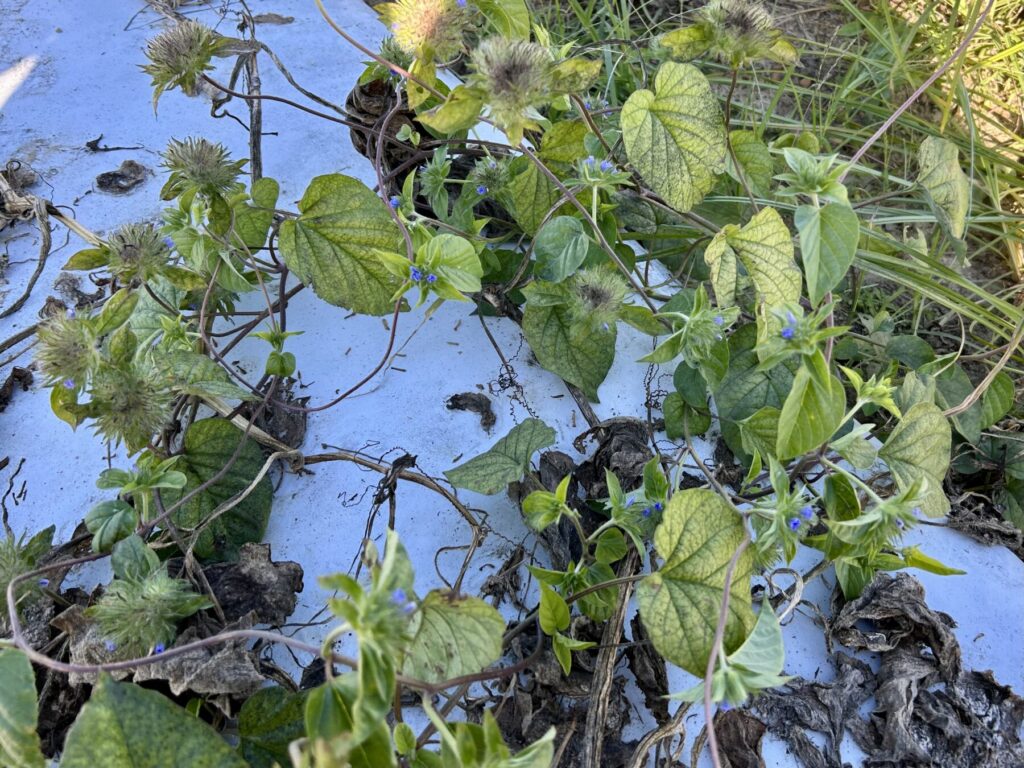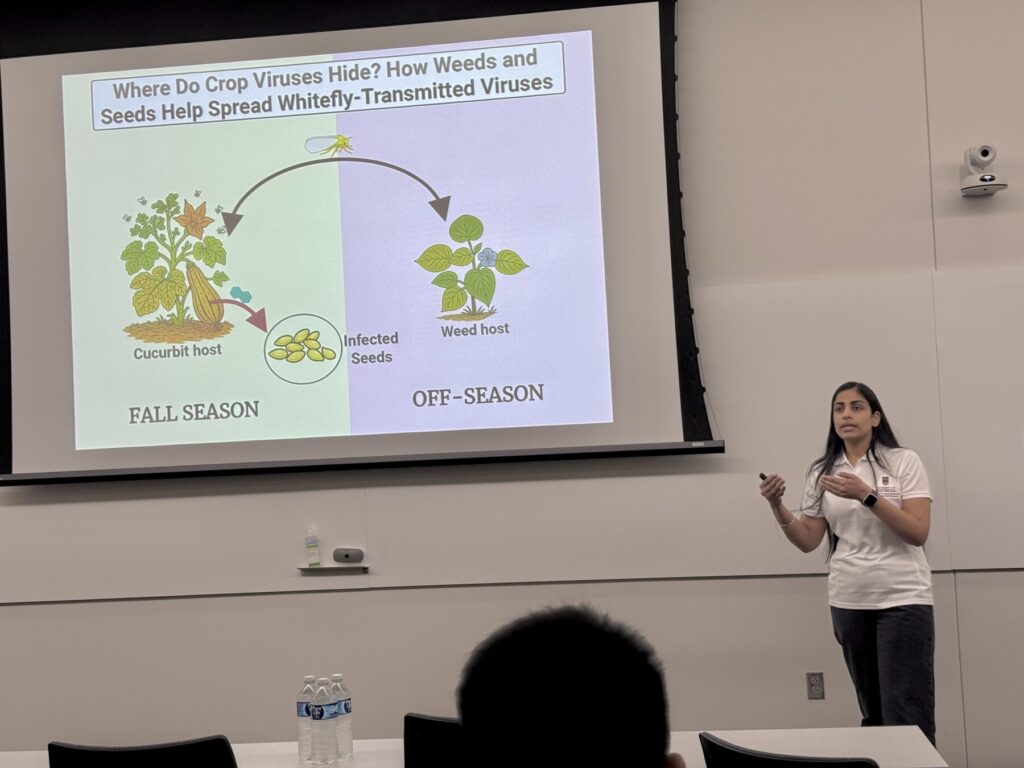Sydney Weigand, University of Georgia, 2025

Public speaking: a daunting prospect for even the bravest of us, but it doesn’t stop the Three Minute Thesis participants. In the most recent competition, a plant pathology researcher’s findings on whitefly diseases impressed observers and judges alike.
Each year, UGA holds the 3MT competition, a research communications event in which contestants must present their findings to the layman in three minutes or less with only one static slide to aid them. This year, Ph.D. candidate Dalvir Dhadly earned the title of “People’s Choice,” cementing her spot amongst UGA’s best communicators.
Dhadly’s presentation, “Where Do Crop Viruses Hide? How Weeds Help Spread Whitefly-Transmitted Viruses” gave a concise overview of the work she’s doing over on the Tifton campus, which I had the pleasure of discussing with her over Zoom.
Dhadly works with two whitely-transmitted viruses: cucurbit leaf crumple virus and cucurbit chlorotic yellows virus, which both cause severe crop losses in the southeastern United States. Although they usually concentrate in different areas of the plant, they’re often seen in conjunction due to the fact that they share a vector. Thanks to researchers like Dhadly, we now know more about the overwintering habits of these viruses.
Back in 2022, a University of Georgia study revealed that whiteflies were found unexpectedly surviving on weeds during the winter. This prompted Dhadly to wonder if the viruses they carry were surviving with them, waiting for an opportune moment to re-infect. She began conducting field surveys in late summer and fall and discovered that the whitefly-transmitted viruses were detected in the weeds near vegetable fields. Dhadly was able to confirm that when whiteflies fed on infected weeds, they picked up the viruses and could pass them back to cucurbits nearby, revealing that these weeds are a key part of how these plant viruses/diseases keep coming back each season. Further details on this study are available in a recently published article.
Dhadly’s initial goal was understanding how these viruses were surviving and spreading, but now that they have some answers, she hopes her work will help fine tune current disease management strategies. At this time, farmers spray for whiteflies, but Dhadly believes that integrating a weed management protocol to address the second factor of spread would be beneficial. She also hopes to help find answers to questions that farmers may have about where and when to spray.
For more information about the competition and its 2025 winners, check out the 3MT website.
